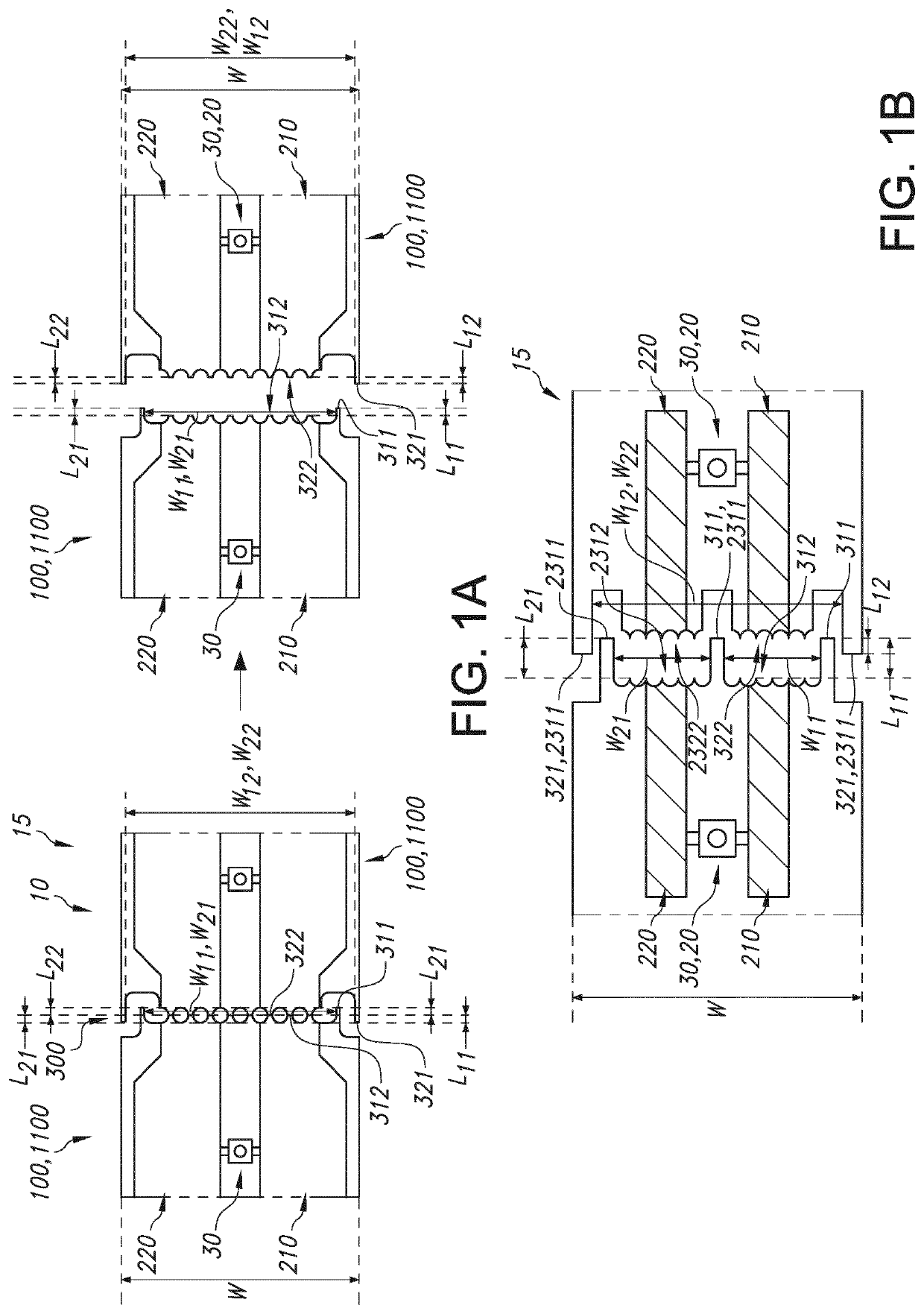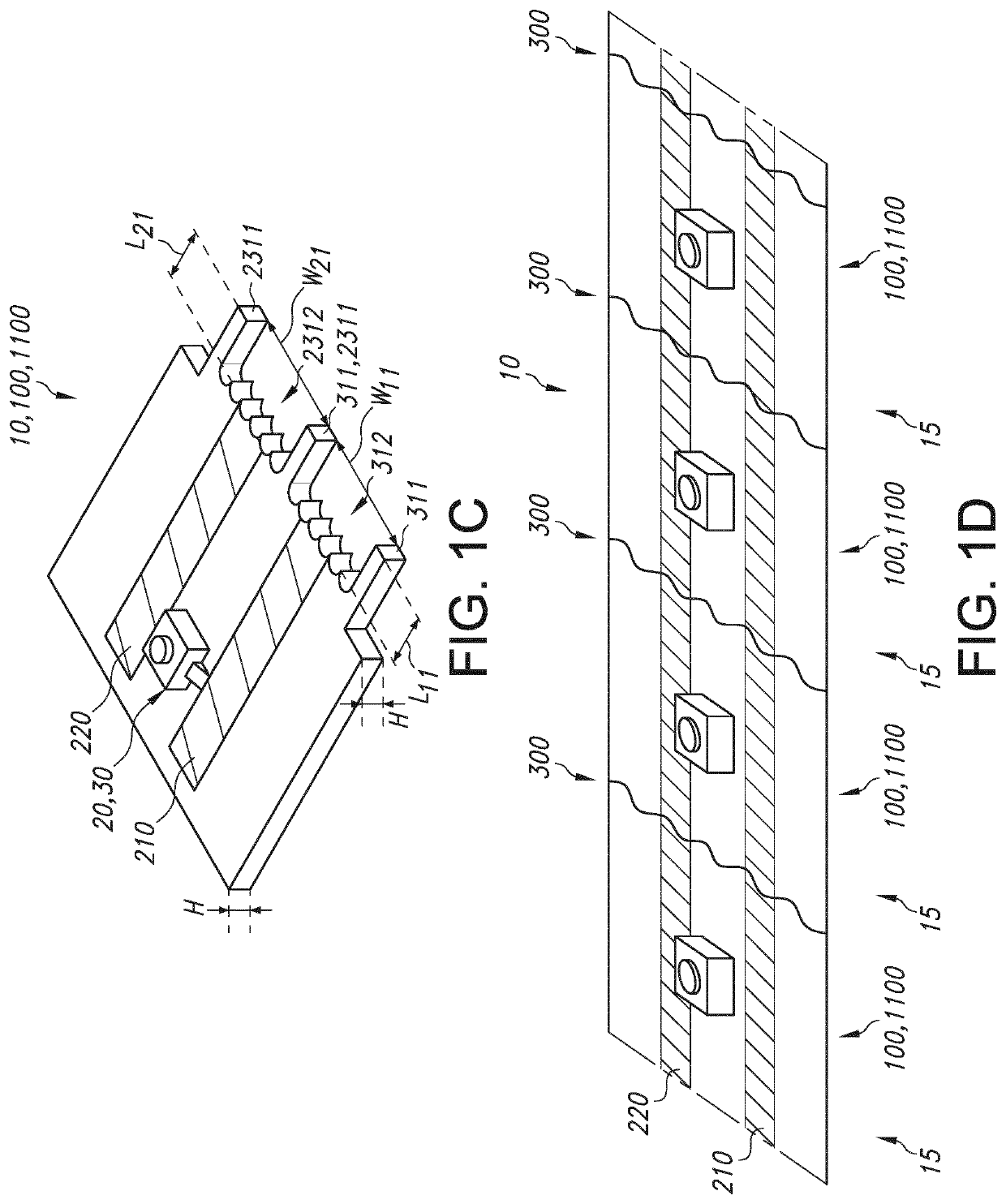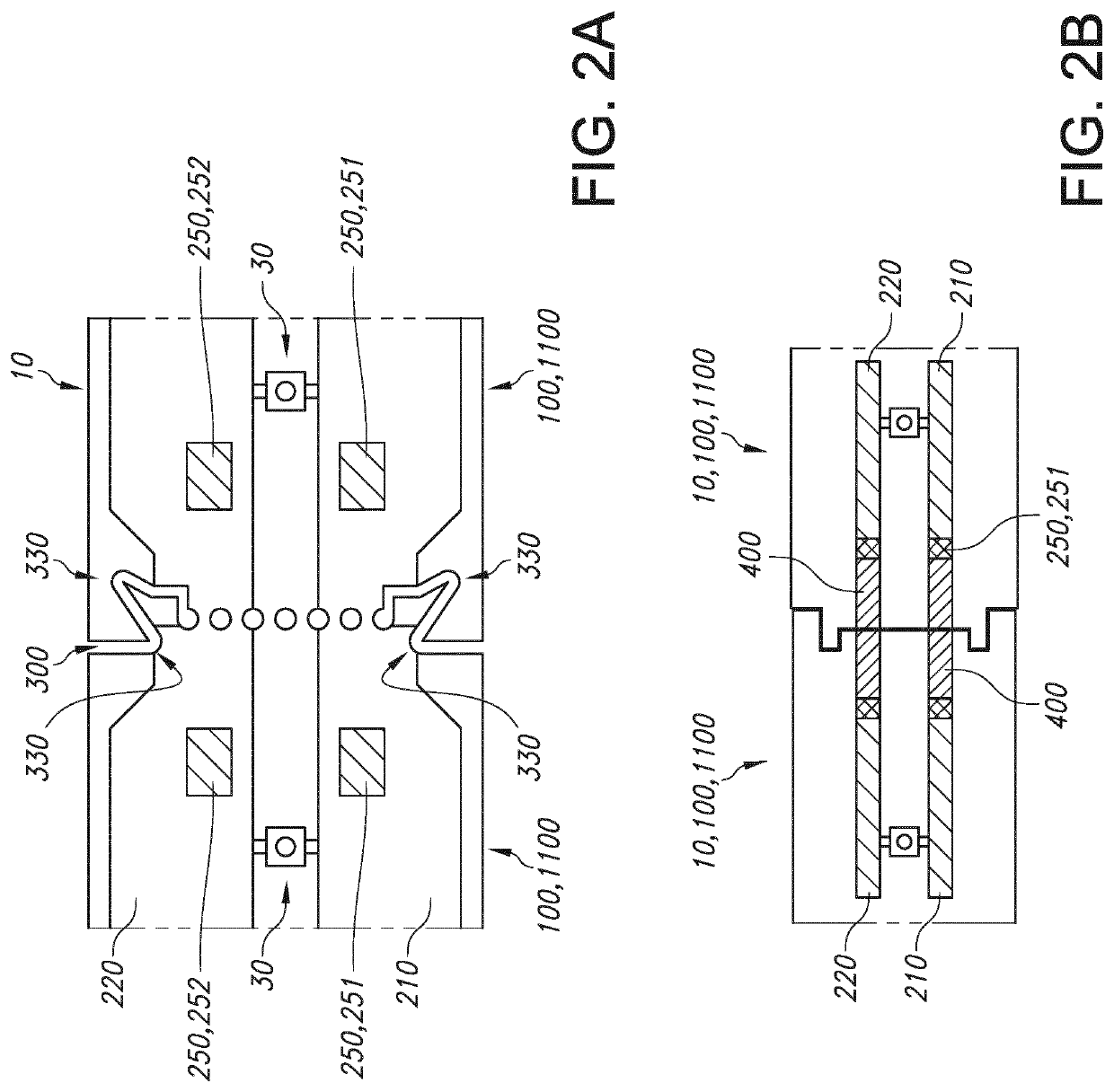Separable modules PCB modules
a technology of pcb modules and separable modules, which is applied in the direction of printed circuits, circuit bendability/stretchability, programmable/customizable/modifiable circuits, etc. it can solve the problems of prior art systems that do not provide the desired solutions for practical applications, and essentially do not provide scalable systems. , to achieve the effect of reducing the chance, improving stock management, and reducing the chance of shortening
- Summary
- Abstract
- Description
- Claims
- Application Information
AI Technical Summary
Benefits of technology
Problems solved by technology
Method used
Image
Examples
Embodiment Construction
[0064]FIG. 1a very schematically depicts an embodiment of a printed circuit board 10 as described herein.
[0065]The printed circuit board 10 in this embodiment includes a first electrically conductive track 210. The printed circuit board 10 comprises a set 15 of two printed circuit board areas 100 both comprising a part of the first electrically conductive track 210. The printed circuit board 10 further comprises a perforation line 300 between the two printed circuit board areas 100. This can be used for customizing the printed circuit board 10 into two physically separated printed circuit board area comprising parts 1100, as shown on the right of the drawing.
[0066]The perforation line 300 is configured as a non-straight line. The perforation line 300 comprises relative to one of the printed circuit board areas 100, and in a plane of the printed circuit board 10, a first projecting part 311 and a first recessed part 312. The first recessed part 312 is recessed relative to the first p...
PUM
 Login to View More
Login to View More Abstract
Description
Claims
Application Information
 Login to View More
Login to View More - R&D
- Intellectual Property
- Life Sciences
- Materials
- Tech Scout
- Unparalleled Data Quality
- Higher Quality Content
- 60% Fewer Hallucinations
Browse by: Latest US Patents, China's latest patents, Technical Efficacy Thesaurus, Application Domain, Technology Topic, Popular Technical Reports.
© 2025 PatSnap. All rights reserved.Legal|Privacy policy|Modern Slavery Act Transparency Statement|Sitemap|About US| Contact US: help@patsnap.com



